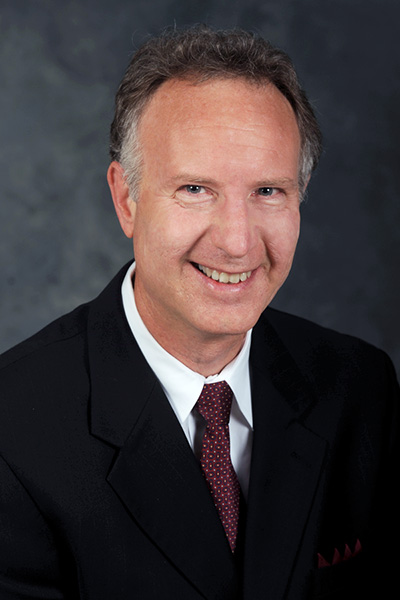- Academic Programs & Support
- Departments, Schools & Colleges
- College of Business
- About the College of Business
- Ideas with Impact
- Research Examining Lingering Impacts of COVID-19 on US Economy
Research Examining Lingering Impacts of COVID-19 on US Economy

Robert Lahm
How have lingering after-effects of the global COVID-19 pandemic – including labor shortages, supply chain disruptions, interest rate hikes and inflation – combined with the threat of a looming recession affected consumers, entrepreneurs and small businesses across the nation?
That is the subject of ongoing research by two faculty members in Western Carolina University’s College of Business who are examining a multitude of factors to help determine where the U.S. economy currently stands and, perhaps more importantly, where it is headed.
While some economists have stated unequivocally that a recession is already underway, others point to factors such as high consumer spending and low unemployment rates as indications that an economic downturn is not yet occurring and may be averted.
Robert Lahm, WCU professor of entrepreneurship, and colleague Lane Perry, assistant professor of entrepreneurship, are sorting through the wide array of economic influencers and vast amount of data to try to help keep up with conditions from Main Street to Wall Street.
The task is all the more complicated, Lahm and Perry say, because of mixed signals being given by economic conditions.
“One challenge has to do with definitions. According to traditional measures, two consecutive quarters of negative gross domestic product, or GDP, would indicate a recession is present, and the U.S. economy experienced such a performance in the first two quarters of 2022,” Lahm said.
“However, there is an organization known as the National Bureau of Economic Research, which officially declares a recession or the lack thereof. So far, the NBER has cited mitigating factors to suggest that, while ‘technically’ the U.S. economy experienced a recession in the first half of 2022, during the second half there were indicators to suggest some improvements,” he said.
Among those signs of improvement is a dramatic surge in the number of new businesses that have launched in the wake of the pandemic, the researchers said. They point to U.S. Census Bureau data reporting that nearly 5.4 million businesses were formed and registered in 2021. “That is the largest number of documented businesses ever formed in a single year in the United States,” Perry said.
Drilling deeper, however, the researchers said that the majority of that growth in new businesses has come in the small-business sector among companies that have no intention or no likelihood of hiring additional employees or managing payroll – often called “no-propensity” businesses.
“Since 2018 there has been a 102% increase in ‘no-propensity’ businesses, from 1.1 million in 2018 to 2.3 million in 2022. During the same period, we saw only an 18% increase of ‘high-propensity’ businesses – that is, those that do intend to take on employees – from 2.4 million in 2018 to 2.8 million in 2022,” Perry said.
“This demonstrates that, while there has been healthy growth in applications for business formations annually, nearly all of it has come from no-propensity businesses not likely to hire employees or manage a payroll,” he said.
Other factors at play in the post-COVID world, the researchers said, are a rapidly expanding “gig economy” in which workers string together several part-time, contract or freelance opportunities as opposed to holding one full-time job, and increasing acceptance by employers of allowing employees to work remotely instead of coming into the workplace daily.
“We can’t show conclusively that business growth rate increases are entirely attributable to COVID-19 because freelancing has been increasing over time,” Lahm said. “But, taking it all together, we suspect that the growth of a digital economy – basically that which is enabled by online interconnectedness – along with pandemic responses such as working virtually from home and a large increase in the formation rates of no-propensity business filings seem to be phenomenon that are all in alignment with one another.”
Lahm and Perry have examined short-, medium- and long-term impacts of COVID-19 – which have been exacerbated by the onset of sustained inflation, supply chain disruptions and rising interest rates (the Federal Reserve increased interest rates for the ninth consecutive time at its March 21-22, 2023, meeting). With such trends presumably contributing to rising consumer debt levels, they say they have concerns about the overall strength of the U.S. economy.
For example, the New York Federal Reserve recently reported that U.S. households are racking up record amounts of credit card debt as they confront relentlessly high prices for everyday necessities, Lahm said.
“Tech sector layoffs and the recent Silicon Valley Bank failure would not be considered reassuring, either,” he said. “However, the development of more businesses – despite being mixed in the likelihood of creating more jobs and wages – could still be a silver lining pointing toward the American entrepreneurial spirit being alive and well.”
Perry and Lahm say they believe that the current shift in economic dynamics is an example of a disruption of habitual human behavior that often follows natural and man-made disasters, part of a phenomenon previously identified by sociologist Charles Fritz as a “form of societal shock.”
“It is possible that the challenging conditions associated with COVID-19 have caused entrepreneurs to do what entrepreneurs do: take into hand and create value from difficulty. As the adage goes, ‘necessity is the mother of invention,’ and this is demonstrated each time individuals, nations or people in the world at large have faced adversity,” Lahm said.
“For those with an entrepreneurial mindset, the flip side of any challenge is a potential opportunity, which often arises from creating solutions to problems. There has been a strong correlation suggested between opportunity and the conditions attributed to natural and human-made disasters,” he said.
Lahm and Perry have several articles about their research published or accepted for publication in professional journals or conferences including the Appalachian Research in Business Symposium, Global Journal of Entrepreneurship, and Proceedings of the Institute for Global Business Research.
Despite the pandemic and economic conditions Lahm and Perry have been tracking, they said they believe the entrepreneurial mindset tends to prevail with creativity, problem-solving and value creation and that, in most circumstances, opportunity exists when viewed through the right lens.
“It may be valuable to remember that ‘opportunity’ comes from the Latin phrase ‘ob portum veniens,’ meaning ‘coming toward a port.’ The most seasoned, tenacious and innovative entrepreneurs and leaders usually weather and harness both favorable and unfavorable winds,” Perry said. “The U.S. economy, because of the resilience of its people since its founding as a nation and the inventiveness of entrepreneurs, is very likely to successfully emerge from such stormy seas.”

